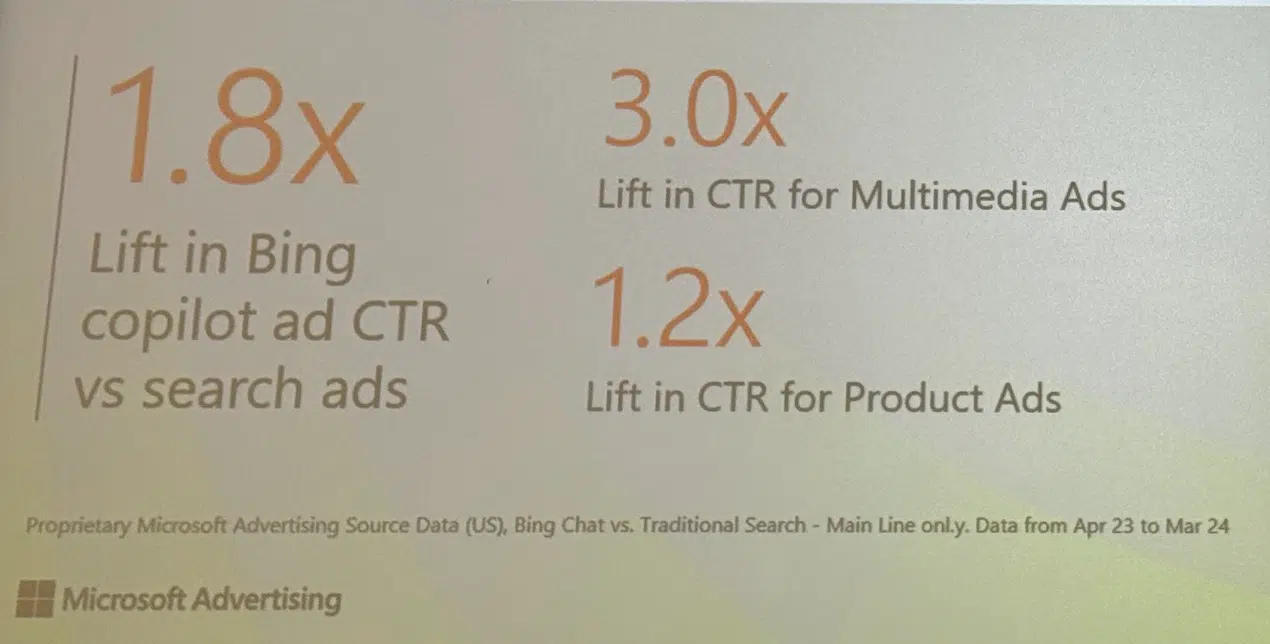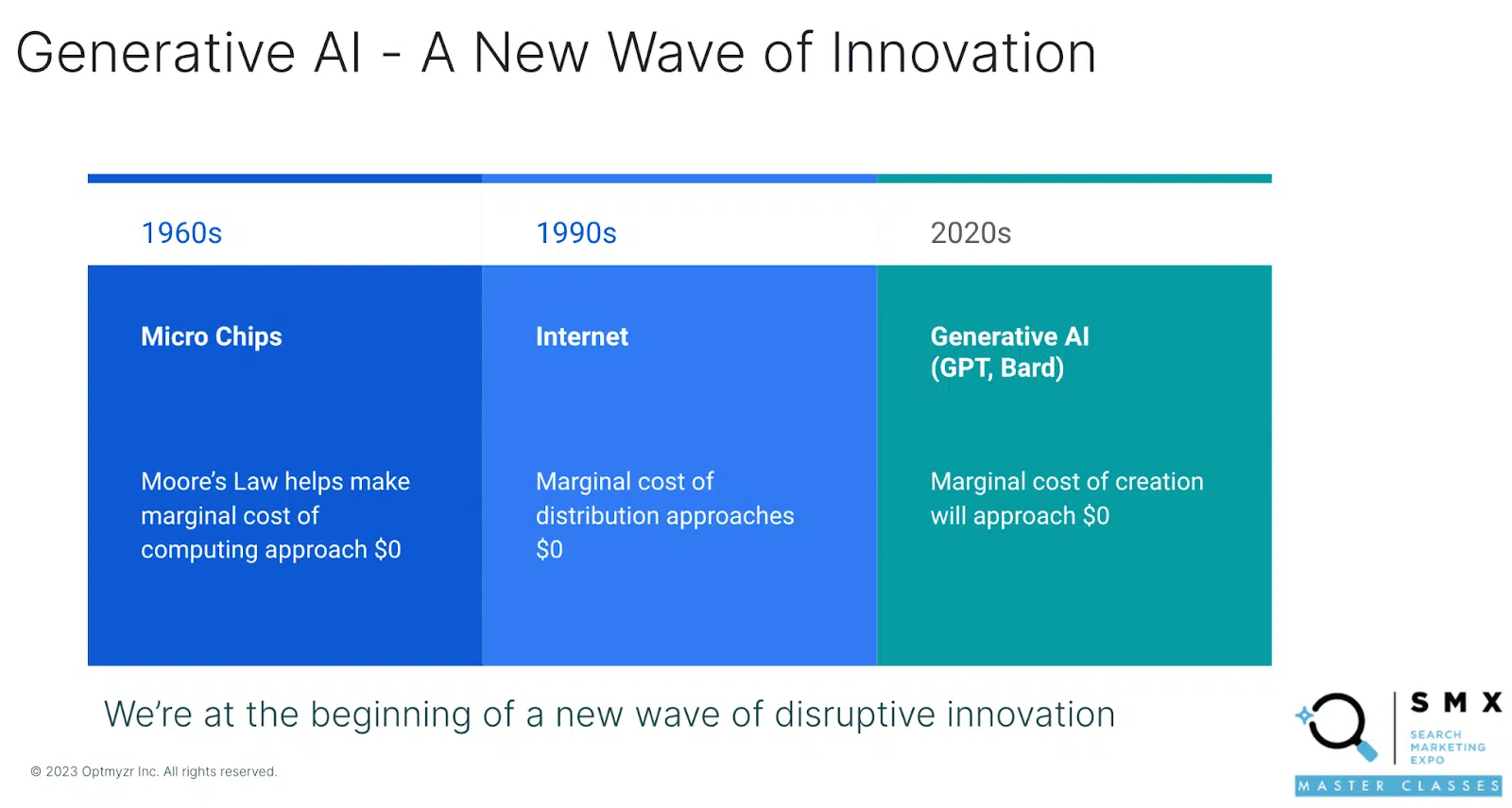I attended Google Marketing Live (GML) 2024 at Google’s Mountain View headquarters, and it was quite an experience. I witnessed firsthand the array of new product launches and updates that Google unveiled and had a chance to talk with Google’s product leadership about it.
With over 30 new features to enhance advertisers’ capabilities, there were clear trends (ecommerce is a big priority) and notable gaps (B2B use cases were sparse).
From short-term solutions to long-term innovations
The GML 2024 keynote covered two crucial aspects: the long-term and the short-term.
- The long-term vision offered insights into the future of search, highlighting potential innovations and trends driven by Gemini.
- Meanwhile, the short-term focus addressed the immediate needs of advertisers, whose jobs have become more demanding than ever.
Scope creep and resource planning are major challenges to keeping up with ad accounts, according to this year’s PPC Survey. Advertisers are looking for solutions that can help alleviate this pain in the immediate term.
When looking at social media, there’s a lot of buzz and emphasis on the short-term solutions that have been announced, so I won’t address those here. But I will dive into the less-discussed long-term vision for the future of search advertising.
Generative AI is revolutionizing what’s possible with technology, greatly impacting how consumers behave. This change will, in turn, affect how advertisers connect with consumers.
A future vision of search advertising
Generative AI is set to be one of the most transformative technological advancements, significantly impacting the PPC advertising landscape.
The implications for our field are immense, making it essential to understand the potential changes and adapt our strategies accordingly. GML 2024 offered a preview of this future.
Omnipresent generative assistants
Philipp Schindler’s demo of the generative assistant illustrated how AI can act as an omnipresent helper for people. I took away two key points:
- If an AI assistant is always with consumers, advertisers have constant opportunities to connect with them in meaningful and helpful ways.
- The assistant can function as a digital memory, helping consumers recall any experiences they’ve shared with it, creating another opportunity for marketers.
Hands-free assistants
While Schindler’s demo involved holding a phone camera to show the assistant what he saw, more practical hands-free assistants are emerging, making it easier for assistants to always be there with the person they’re helping.
For example, Meta’s AI Glasses have a built-in camera and speakers, allowing users to interact with their environment by saying, “Hey Meta, look at this and tell me…” I use this to summarize things I am reading, like magazines or newspapers.
There are also several button-like assistants, such as the Rabbit R1, Humane AI Pin and Limitless Pendant. Though some of these products have received poor reviews for their execution, they are first-generation products that still showcase what may soon be possible.
Companies will have more opportunities to connect with prospects and customers when people can access useful assistants without pulling out their phones. While we may **** our smartphones, there is tremendous friction involved in pulling out your phone every time you need something.
And don’t even get me started on how many clicks it takes nowadays to do what you want on websites before you’ve gotten through all the privacy acknowledgments and discount offers for new customers in an attempt to build first-party data.
Imagine using a hands-free assistant with multi-modal inputs, walking into a fancy hotel, and asking your assistant to find furniture that matches the room or even redesigning your living room in the style of the hotel lobby. With the rise of generative AI, this incremental search behavior will become more typical.
And remembering that new customers are the most expensive to acquire, how could generative AI help drive loyalty and repeat business from existing customers?
Imagine building an IKEA cabinet and hearing your assistant say you’ve placed a panel backward and directing you to page 7 of the manual.
Or, imagine your Blue Apron assistant narrating the recipe while monitoring the pot on the stove and telling you what to do with the next ingredient it sees on your chopping board.
Enhanced consumer memory
Generative AI’s ability to understand consumer behavior through multimodal inputs will also offer advertisers new opportunities.
Cameras can see and interpret what you look at, while microphones can hear and summarize your conversations. This capability opens up possibilities related to memory and can help consumers convert long after they think of something they’d like to buy.
The problem with demos at events like GML is that they often feel forced and don’t represent real-world scenarios. It might be awkward to interrupt a real-world conversation to ask your assistant where to buy the sneakers the person you’re talking to is wearing, but what if you could address it later?
In a quiet moment, you could ask your assistant to remember the sneakers from your conversation with Kirk and help you find similar ones for sale nearby.
Google Ads has long used recent search history to maintain the context of what consumers seek. For instance, a search for “weather in Rome” followed by a generic search for “hotels” will still show hotels in Rome.
But imagine if this memory extended beyond keywords and included all your daily experiences. It would be much easier to find exactly what you’re looking for.
Keywords lose importance
Generative AI’s memory points to a future where keywords become far less critical.
Just as the keyword “hotels” in my earlier example leads to results for hotels in Rome, the additional multimodal memory from an omnipresent assistant drastically reduces the need for specific keywords to get relevant results.
Your assistant will know you spent a while looking at Adidas road racing sneakers in a store.
When you’re ready to shop, it will start with those sneakers, even if you don’t use a related keyword. You could tell the assistant you want to buy “those shoes you saw earlier,” and it would know precisely what you meant.
Generative search results, which Google said have higher click-through rates than non-generative ones, illustrate this reduced dependency on keyword-centric strategies to show relevant ads.
Microsoft Ads recently reported a 1.8x lift in CTR for ads in Bing Copilot compared to regular search ads. This shows that the context an assistant gathers about its user can help deliver more relevant results.

This trend suggests that keywords may become less crucial as AI better understands user intent through engagement history.
Get the daily newsletter search marketers rely on.
More custom ads when creative costs approach zero
If you’ve seen some of my recent presentations at SMX, you’ll be familiar with my slide about the waves of innovation in Silicon Valley.
It shows how every 30 years, a new technology emerges that drives the marginal cost of something critical to zero.

In the 1960s, microchips made the marginal cost of computing approach zero, allowing businesses to become more efficient due to the ubiquity of computers. For example, no one considers the cost of creating a new spreadsheet to analyze a business trend because it’s essentially zero.
In the 1990s, the web reduced the marginal cost of distribution to nearly zero, enabling anyone who created content to distribute it globally without needing expensive relationships with stores or distributors. Now, 30 years later, generative AI promises to reduce the marginal cost of creation to zero.
I can create custom bedtime stories for my kids on the fly. My 5-year-old daughter is “producing” songs about our kittens, and we generate coloring pages based on their imagination.
Some venture capitalists I’ve spoken with in Silicon Valley envision a future where Netflix produces movies custom-made for each user. While that may be several years away, custom 30-second commercials may be far closer.
Recently, at several conferences in Los Angeles, I saw a glimpse of Hollywood’s future, where generative AI is cutting the cost of production dramatically. For example, this summer, a Swedish movie, UFO Sweden, will be released in U.S. theaters, and most viewers will believe it was shot in English because generative AI has synced the lips of all actors.
Hence, it looks like they’re speaking English instead of Swedish. This type of technology means that video ads could be customized for each consumer in the near term.
So, imagine a car commercial in which the driver looks just like you, and the car is driving around your city. Personalized video ads like this are on the horizon, and imagine how they could significantly boost conversion rates.
Generative AI will increase conversion quality by reducing transactional friction
A GML example illustrated how conversion rates can improve thanks to reduced friction. A storage company used photos of rooms containing furniture, and generative AI classified the furniture and estimated its sizes.
This innovation removed the usual friction of deciding the proper storage unit size after users clicked on an ad, as the AI did this hard work for them. AI made it easier for consumers to not just fill out a lead gen form but actually reserve the best product for their needs.
While lead-gen advertisers expressed frustration that GML delivered far more solutions for ecommerce than lead-gen, Google shared that 50% of advertisers don’t leverage first-party data for ads. For instance, some lead-gen advertisers don’t yet connect their CRMs to help the ad platform understand lead quality.
The issue here is that the automations driving campaigns and bids can only work as well as the data provided by advertisers: “garbage in, garbage out.” The machine needs high-quality data to deliver the desired outcomes.
Advertisers should integrate their CRM systems with ad tools. Still, even if they don’t, I believe that generative AI’s ability to reduce friction for advertisers with more complex sales cycles will help shorten their conversion lag.
The storage unit example illustrates this well. If generative AI provides consumers with more appropriate suggestions, conversion rates should also increase.
Also, by streamlining time-consuming tasks that slow down the decision process, generative AI can accelerate it. This efficiency helps advertisers quickly identify high-quality leads, inform the ad platform and generate more high-quality leads.
Enhancing advertising efficiency and effectiveness with generative AI
GML 2024 showcased a future where generative AI transforms advertising, offering both immediate solutions and a visionary outlook for the years ahead.
While ecommerce advancements took center stage, the potential for generative AI to reshape B2B marketing and lead generation was evident.
Advertisers can enhance efficiency and effectiveness by leveraging AI-driven tools, integrating first-party data and reducing transactional friction.
As we navigate these changes, staying adaptable and embracing innovation will be crucial for maximizing the opportunities presented by this new era of advertising.
Contributing authors are invited to create content for Search Engine Land and are chosen for their expertise and contribution to the search community. Our contributors work under the oversight of the editorial staff and contributions are checked for quality and relevance to our readers. The opinions they express are their own.
Source link : Searchengineland.com
